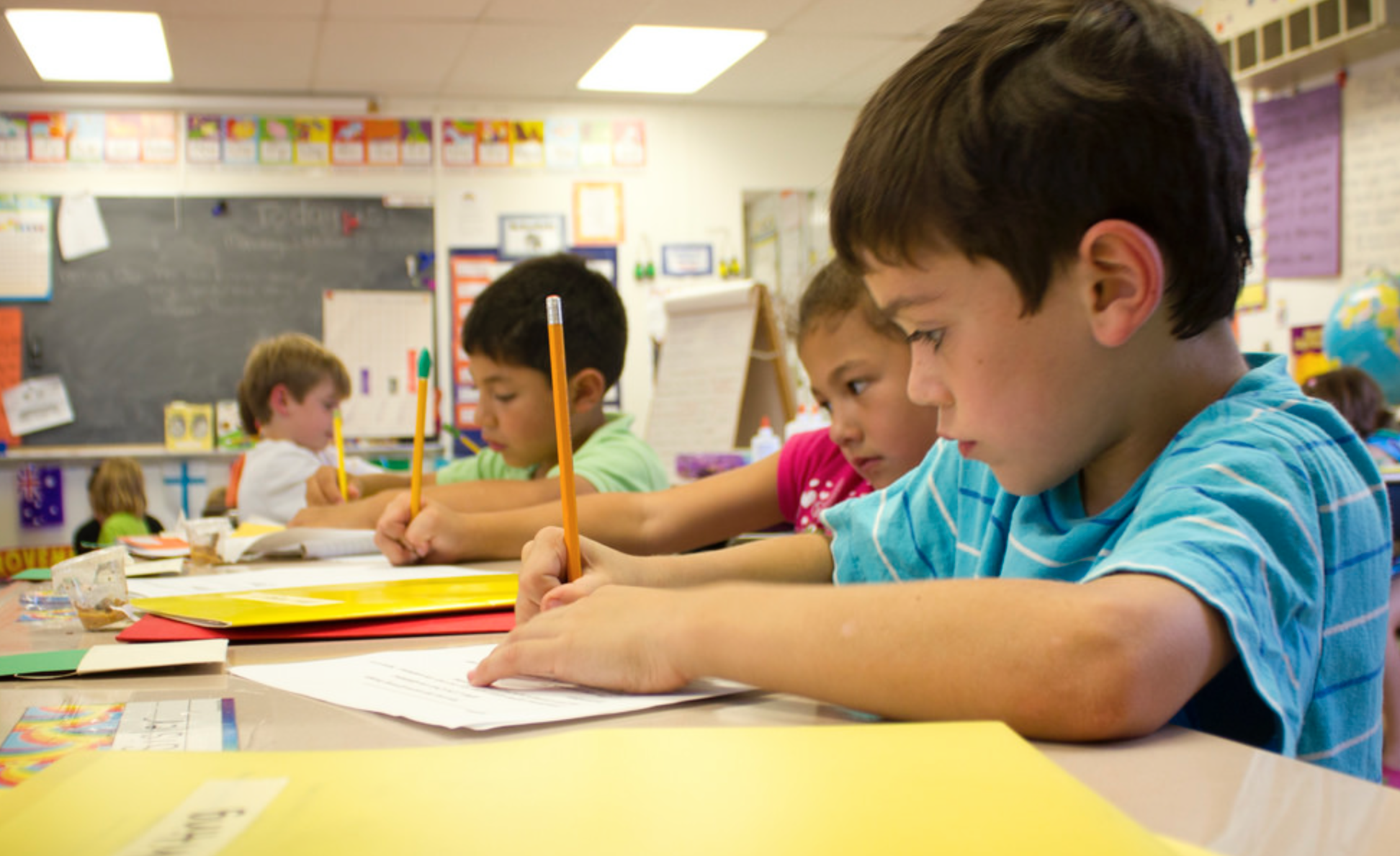Amid teacher strikes and protests across the country, school districts are confronting significant funding challenges, many of them still hurting from recession-related state cuts. But new numbers from the Census Bureau suggest some movement, at least when it comes to per student spending, which saw its biggest annual increase in fiscal year 2016 since 2007.
The numbers also reveal how Texas school districts compare. Up 3.2 percent from the previous fiscal year, the national per student spending was $11,762 in 2016, but few of Texas' largest school districts even approached that number. Likewise, state support for those districts was also well below the national norm.
The state's largest school district, the Houston Independent School District, for example, only spent $9,633 for every student. The next largest district, Dallas Independent School District, had a similar number with per student spending at $9,961. Of the major metropolitan districts, the San Antonio Independent School District had the highest per student spending in 2016 at $10,047.
These numbers don't necessarily reflect dollars going straight to students, however. The calculations include things like salaries and wages, employee benefits, staff support and more. Likewise, different districts have different student bodies and needs.
Despite falling below the national average, several of the largest Texas school districts saw annual increases well above the national rate of 3.2 percent. Houston ISD saw the largest increase with a 15 percent jump from its 2015 per student spending, according to data from the Census Bureau. Arlington ISD, Aldine ISD, Dallas ISD and El Paso ISD all saw annual increases above the national rate.
The numbers also revealed the distribution of revenue sources and here Texas school districts again stand out.
Only 13.8 percent of HISD's revenue came from state sources in 2016, according to the data, among the lowest of the 50 largest school districts in the country. In fact, the only district that saw a smaller share of its revenue from state sources was Austin ISD, which received only 5.6 percent of its 2016 revenue from state sources. As a result, 74.3 percent of HISD's revenue came from local sources, including taxes and parent governmental contributions. Again, the only district of the 50 largest in the country that surpassed Houston was Austin, which received 85.7 percent of its revenue from local sources in 2016. Nationally, the average share of revenue coming from the state was 47.4 percent.
That reflects an ongoing issue within the state. Broad cuts in 2011 are still impacting school districts across Texas, despite rebounding state spending. A study from the Center for Public Policy Priorities and the University of Texas at Austin's UTeach Institute found that five years after the cuts, even as education spending from the state increased, it was not evenly distributed and per student still did not match 2008 spending levels.
A previous story on the Urban Edge explained:
As spending on all instructional programs rebounded, the report notes, equity declined, particularly at the elementary school level. By dividing campuses into four categories depending on the percentage of students enrolled in the free and reduced lunch program, a proxy for socioeconomic disadvantage, the report concluded that, "in 2016 the lowest income elementary schools spent $256 less per student than in 2008 while the wealthiest elementary campuses spent $11 more."
After legal challenges effectively resulted in a dead end for districts looking for more state support, school districts are hoping the legislature will come up with an improved funding formula.
With the release of the data, the Census Bureau also provides several caveats, including a note about the different ways districts may classify "current" spending: "Any analysis involving current spending or per pupil current spending should note that school system and state disparities exist based on what is classified as a current expense."
Explore the data for the 21 largest school districts in Texas, including 2016 per student spending as well as two of several common key measures of student need including the percent of the district considered economically disadvantaged or classified as English Language Learners.

